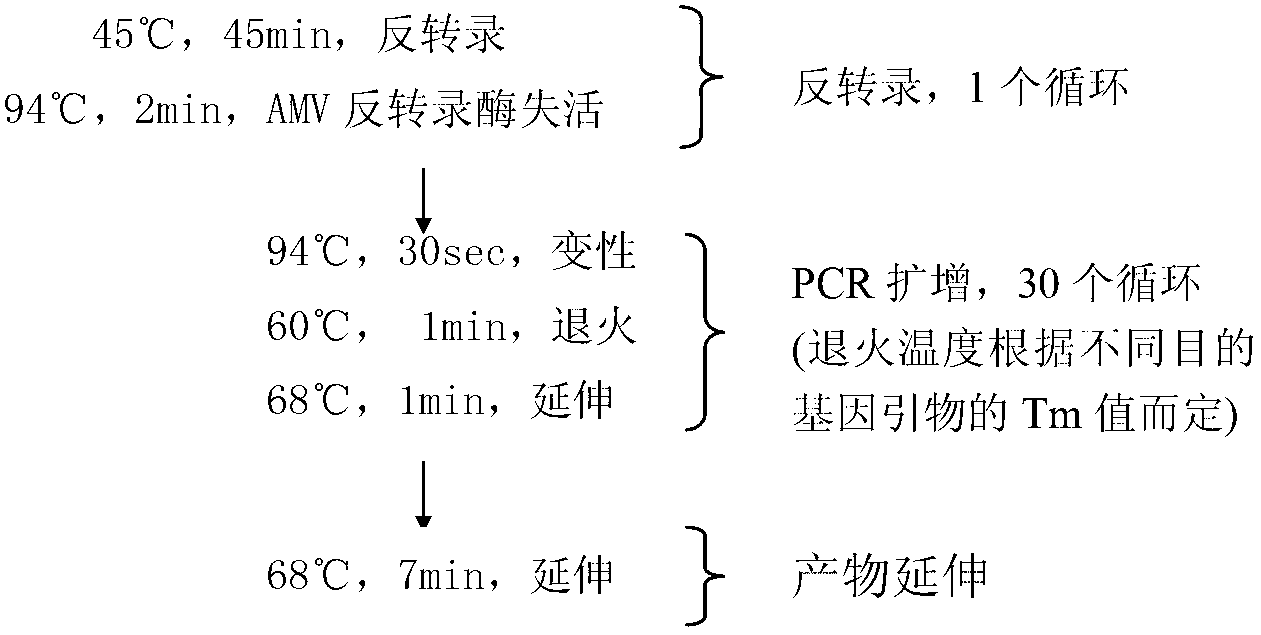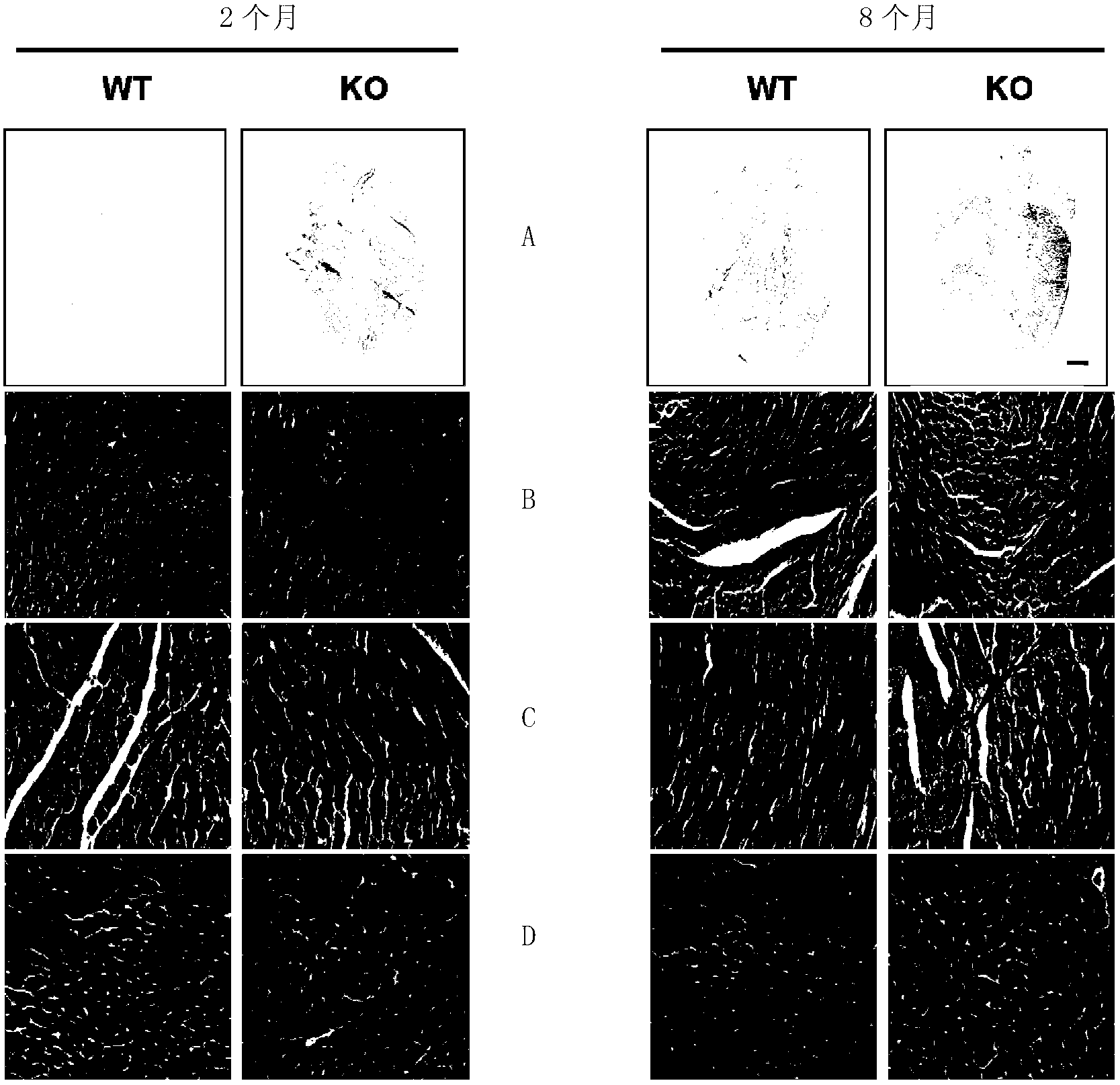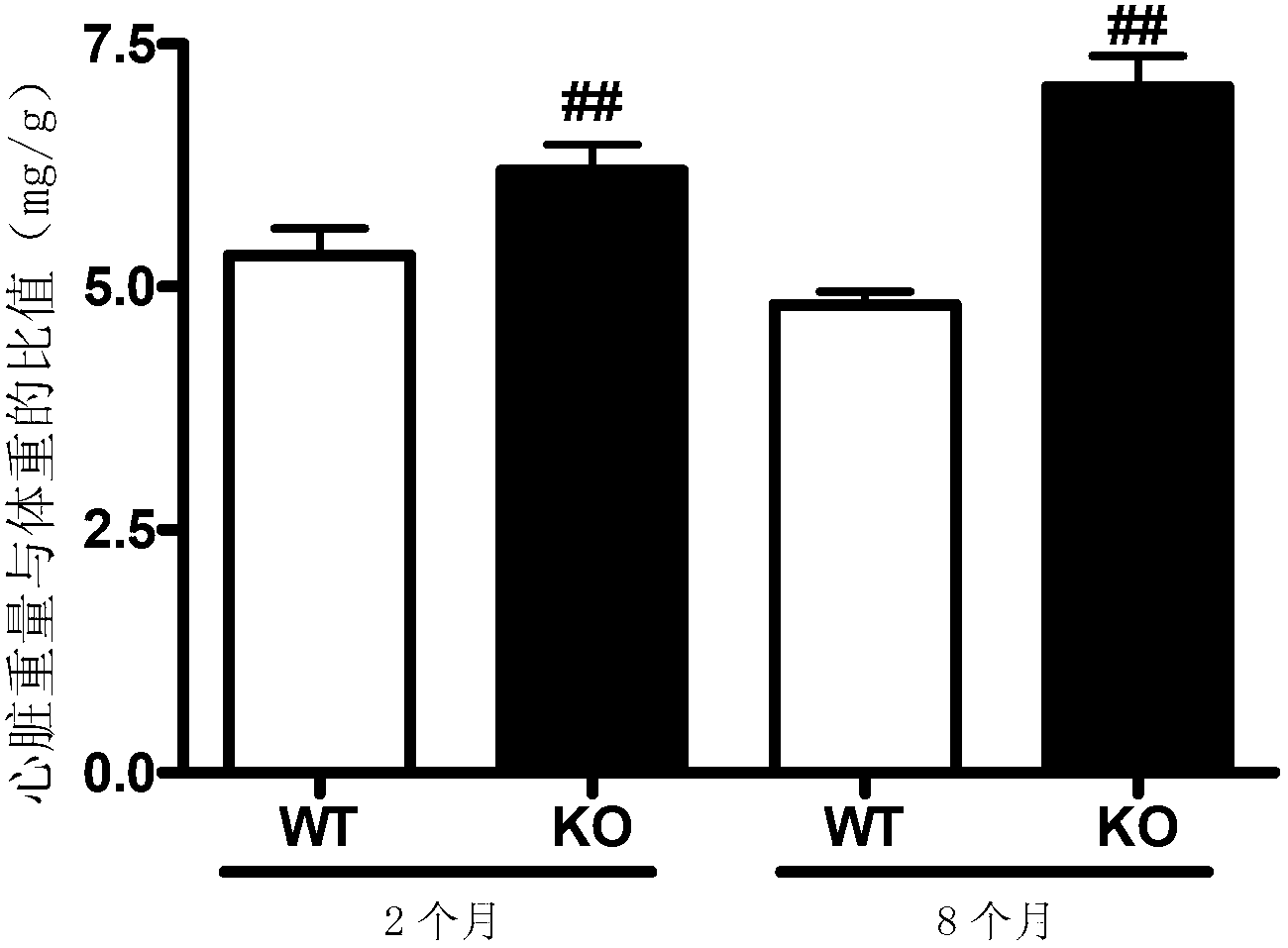New application of casein kinase2-interacting protein-1 (CKIP-1) protein and coding gene thereof
A CKIP-1, 1. CKIP-1 technology, applied in the field of CKIP-1 protein and its coding gene, can solve problems such as decreased myocardial contractility and cardiac decompensation stage
- Summary
- Abstract
- Description
- Claims
- Application Information
AI Technical Summary
Problems solved by technology
Method used
Image
Examples
Embodiment 1
[0051] Example 1, Obtaining of CKIP-1 Gene Knockout Mice
[0052] 1. Obtaining CKIP-1 knockout mice
[0053] 1. Construction of targeting vector
[0054] The mouse CKIP-1 genome is a double-stranded DNA molecule shown in GENBANK ACCESSION NO.67220 (Gene ID: 67220, updated on 11-May-2012).
[0055] (1) The mouse CKIP-1 genome was double digested with restriction endonucleases NotI and XhoI, and a fragment of about 1.4 kb (fragment A) was recovered.
[0056] (2) Digest the ploxPI plasmid with restriction endonucleases NotI and XhoI to recover the vector backbone.
[0057] (3) Ligate the fragment recovered in step (1) with the vector backbone of step (2) to obtain a recombinant plasmid.
[0058] (4) The mouse CKIP-1 genome was double digested with restriction endonucleases EcoR I and SspI, and a fragment of about 9.6 kb was recovered.
[0059] (5) Digest the pBluescript SK(+) plasmid with restriction endonucleases EcoR I and SspI to recover the vector backbone.
[0060] (6) ...
Embodiment 2
[0084] Embodiment 2, KO mice and the comparison of parameters such as heart morphology and heart function of WT mice
[0085] 1. Changes in cardiac tissue morphology
[0086] The hearts of 2-month (or 8-month) KO mice and WT mice were taken respectively, and the myocardial structure and fibrosis degree were detected by HE staining, WGA staining and MTT staining after tissue sections.
[0087] see results figure 1 . figure 1 A is a photograph of HE staining, figure 1 B for figure 1 A partial enlarged view of A, figure 1 C is the photo of MTT staining, figure 1 D is a photograph of WGA staining. Compared with WT mice, heart volume and cardiomyocytes in KO mice were significantly larger at 2 months, and KO mice showed myocardial fibrosis at 8 months.
[0088] The morphological changes of the hearts of the empty vector control mice A were consistent with those of the WT mice.
[0089] 2. Changes in cardiac index
[0090] Take 3 KO mice of 2 months, 3 KO mice of 8 months, ...
Embodiment 3
[0127] Example 3. Confirmation of the role of CKIP-1 gene through the mouse cardiac hypertrophy model (KO mice and WT mice)
[0128] 1. Making a mouse model of myocardial hypertrophy (arch artery constriction)
[0129] KO mice and WT mice were subjected to the following experiments:
[0130] Model group (mouse cardiac hypertrophy model, represented by TAC): 8-week-old mice were anesthetized with tribromoethanol, connected to a small animal ventilator through tracheal intubation, and artificially ventilated. -3 intercostal space to open the thorax, separate the aortic arch and thread a thread under it, make the aorta constriction (Transverse aortic constriction, TAC) according to the uniform standard, and close the thorax.
[0131] Sham operation group (indicated by Sham): except that TAC was not performed, the rest of the operation procedures were completely the same as the model group.
[0132] Arch artery constriction is a routine method, and the literature describing arch...
PUM
 Login to View More
Login to View More Abstract
Description
Claims
Application Information
 Login to View More
Login to View More - R&D
- Intellectual Property
- Life Sciences
- Materials
- Tech Scout
- Unparalleled Data Quality
- Higher Quality Content
- 60% Fewer Hallucinations
Browse by: Latest US Patents, China's latest patents, Technical Efficacy Thesaurus, Application Domain, Technology Topic, Popular Technical Reports.
© 2025 PatSnap. All rights reserved.Legal|Privacy policy|Modern Slavery Act Transparency Statement|Sitemap|About US| Contact US: help@patsnap.com



